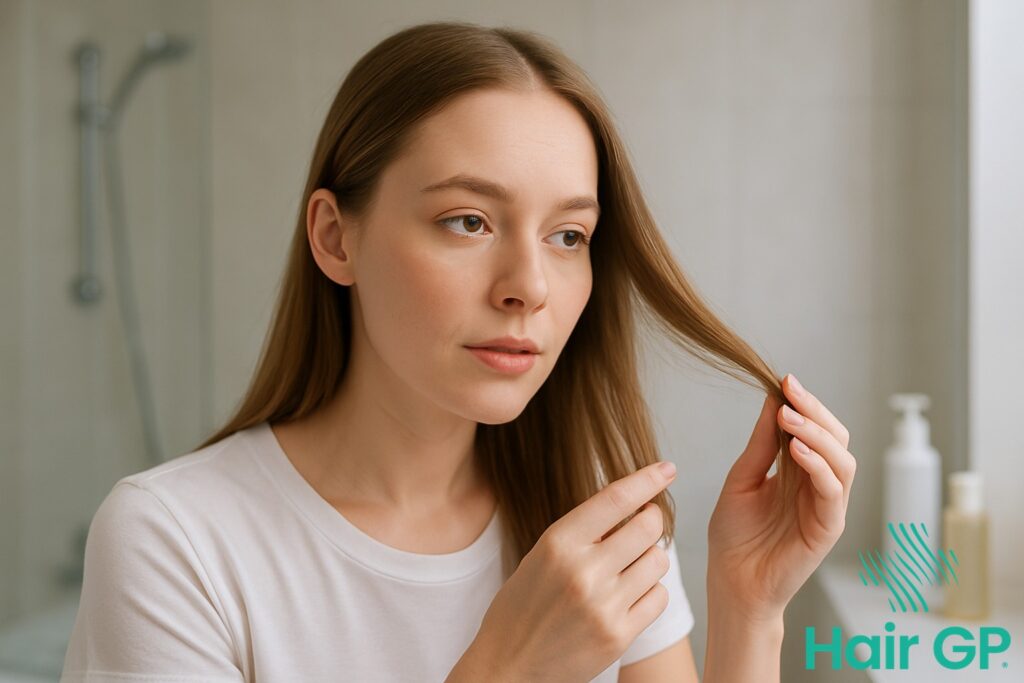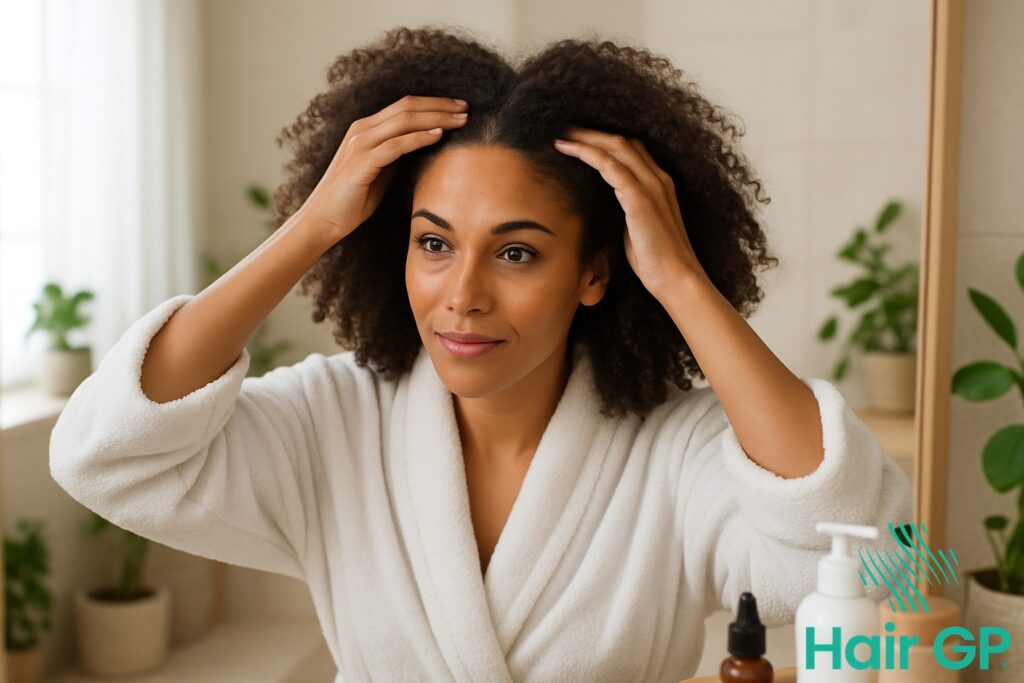Introduction
If you have thin hair, you’ve likely wondered exactly how often you should be washing it. The answer isn’t as straightforward as you might hope, and conflicting advice can leave you feeling confused about the best approach for your hair care routine. Fine hair presents unique challenges that require a delicate balance between maintaining cleanliness and preserving hair health.
Many people with thin hair find themselves caught in a frustrating cycle: their hair becomes oily quickly, leading to frequent washing, which can then cause further damage to already delicate strands. Understanding the optimal hair washing frequency for your specific needs can transform the appearance and health of your fine hair, helping you achieve the volume and vitality you desire.
This comprehensive guide will help you navigate the complexities of caring for thin hair with confidence. We’ll explore the unique characteristics that make fine hair different from other hair types and explain why it tends to become oily more quickly. You’ll discover the science behind sebum production and how it affects your washing schedule, along with practical recommendations tailored to various scalp conditions.
Beyond frequency, we’ll share professional techniques for washing thin hair properly, guide you through selecting the most suitable products, and highlight common mistakes that could be undermining your efforts. By the end of this article, you’ll have a clear understanding of how to create a personalised hair care routine that keeps your thin hair looking its best whilst maintaining optimal health.
Key Takeaways – TL/DR
- Thin hair typically needs washing every 2-3 days, not daily, to maintain optimal health
- Over-washing can strip natural oils and lead to increased oil production and hair damage
- Your specific washing frequency depends on scalp oil production, lifestyle, and hair condition
- Using the right products and techniques is more important than washing frequency alone
- Dry shampoo can extend time between washes while keeping hair fresh
Understanding Thin Hair: Characteristics and Challenges
Understanding the unique characteristics of thin hair is essential for developing an effective washing routine. Fine hair has a smaller diameter than medium textured hair or coarse textured hair, typically measuring less than 60 micrometres in width . This structural difference significantly impacts how your hair behaves and responds to various care practices.
The primary challenge with thin hair lies in its relationship with scalp oils. Hair follicles across all hair type categories produce similar amounts of sebum, but fine strands have less surface area to distribute these natural oils [1]. Consequently, oils travel from root to tip more quickly, creating that familiar greasy appearance within just a day or two of washing. This rapid oil distribution often leads people to believe their scalp produces excess sebum, when in reality, it’s simply a matter of physics.
Additionally, fine hair tends to lie flatter against the scalp compared to thicker textures, reducing air circulation and accelerating oil accumulation. This close contact also makes product buildup more noticeable, further complicating your washing frequency decisions. Understanding these fundamental differences helps explain why generic hair care advice rarely works for those with truly fine strands.
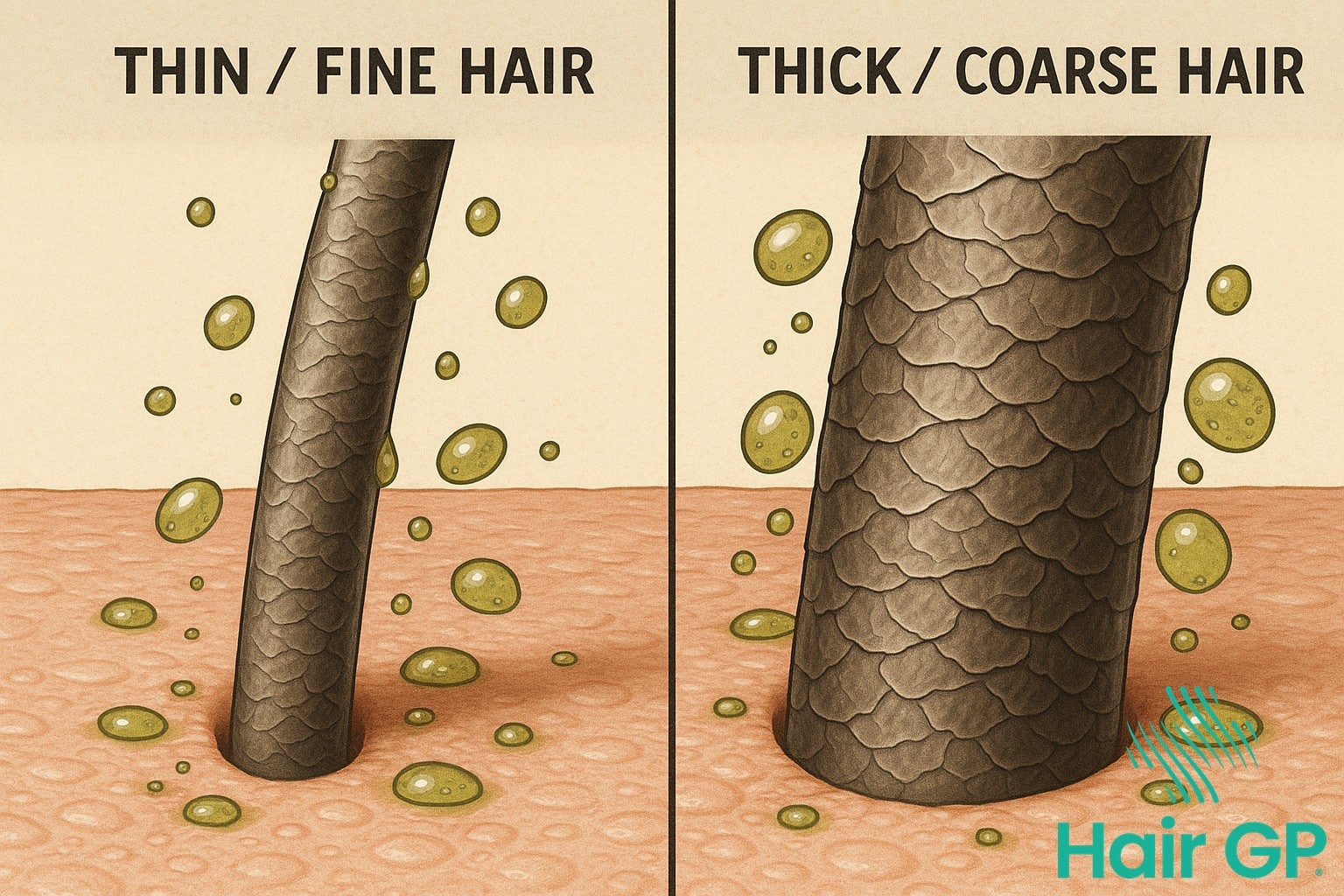
The Science Behind Washing Frequency for Fine Hair
Understanding the biological mechanisms behind sebum production and scalp health provides crucial insight into establishing optimal washing frequencies for fine hair. Scientific research reveals that thin hair requires a unique approach to cleansing, as the delicate balance between natural oil production and cleanliness directly impacts both hair appearance and scalp condition.
How Sebum Production Affects Thin Hair
Fine hair appears greasier more quickly due to fundamental differences in how sebum distributes across the hair shaft. Research indicates that the average scalp produces approximately 1-2 grams of sebum daily[2], which spreads more readily on thin hair strands due to their smaller diameter and reduced surface area. The surface area to volume ratio of fine hair means sebum coats each strand more completely, creating visible oiliness within 24-48 hours. Additionally, thin hair’s lower absorption capacity means oils remain on the surface rather than being absorbed into the hair shaft, contributing to the greasy appearance that prompts frequent washing.
The Overwashing Cycle
Excessive washing creates a counterproductive cycle that can worsen oiliness in fine hair. When frequent shampooing strips natural oils from the scalp, sebaceous glands compensate by increasing production, leading to rebound oil production. This disrupts the scalp’s natural pH balance, typically maintained between 4.5-5.5, potentially causing irritation around hair follicles. Breaking this cycle requires gradually extending time between washes, allowing the scalp to regulate sebum production naturally while maintaining a healthy scalp environment through proper cleansing techniques.
Optimal Washing Schedule: Finding Your Sweet Spot
Finding your ideal washing routine requires understanding your unique hair needs and lifestyle demands. By considering your scalp type, daily activities, and hair goals, you can establish a schedule that keeps your thin hair looking fresh without causing damage from overwashing.
For Oily Scalps with Thin Hair
If you’re dealing with excess oil production, washing hair everyday may seem tempting, but it could actually worsen the problem. Instead, aim for washing every 2-3 days to maintain balance without triggering overproduction of sebum. Morning washing works best for oily scalps, as it removes oils accumulated overnight and provides a fresh start to your day. Between wash days, try dry shampoo or gentle oil-blotting techniques to extend your washing routine without compromising appearance.
For Normal to Dry Scalps
Those with normal to dry scalps benefit from less frequent washing, typically every 3-4 days. This schedule allows natural oils to nourish your hair whilst preventing buildup. Focus on hydration strategies like leave-in conditioners and protective overnight styling to maintain moisture between washes. Daily washing can strip essential oils from already dry hair, so embrace fewer washes to improve your hair’s overall health and appearance.
Adjusting for Lifestyle Factors
Your optimal wash day frequency depends heavily on your lifestyle. Regular exercise may require more frequent cleansing, but consider rinsing with water alone after light workouts. Environmental factors like pollution exposure or humid climates might necessitate adjustments to your schedule. Product buildup from styling products also influences timing—those who use minimal products can extend time between washes, whilst heavy product users may need more frequent cleansing. Listen to your hair’s needs and adjust accordingly, remembering that flexibility in your routine leads to healthier results.
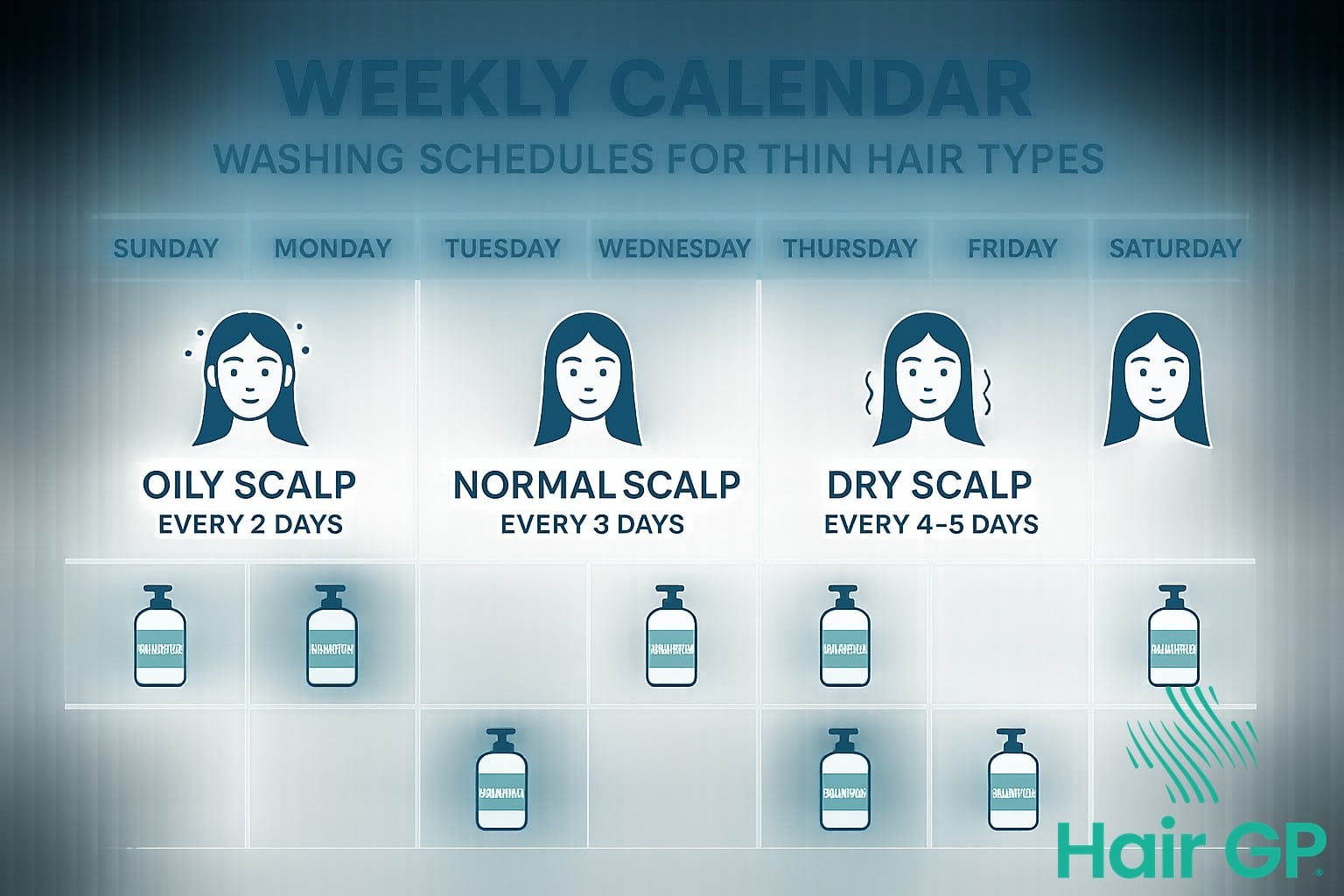
Best Washing Techniques for Thin Hair
Mastering the right washing technique transforms your hair care routine from a potential source of damage into a strengthening ritual for thin hair. By implementing gentle methods and proper product application, you can minimise hair breakage whilst maintaining optimal scalp health and volume.
Pre-Wash Preparation
Before water touches your strands, proper preparation prevents unnecessary stress on damaged hair. Start by gently detangling with a wide-tooth comb, working from ends to roots to avoid pulling and breakage. A pre-wash scalp massage stimulates blood circulation, promoting healthier growth whilst distributing natural oils that protect your hair texture during cleansing. For extra nourishment, apply a lightweight oil treatment to mid-lengths and ends 15 minutes before washing, focusing on areas prone to dryness without weighing down fine strands.
During the Wash
Temperature matters significantly when cleansing thin hair—lukewarm water opens cuticles just enough for effective cleansing without causing damage. Focus shampoo application directly on the scalp, using gentle circular motions with fingertips (never nails) to achieve a clean scalp without aggressive scrubbing. Allow suds to cleanse lengths naturally as you rinse. When applying conditioner, concentrate on mid-lengths to ends where your hair needs moisture most, avoiding roots to prevent flatness. Squeeze excess water before conditioning, ensuring better product absorption. Rinse thoroughly with cool water to seal cuticles, enhancing shine and reducing frizz whilst protecting delicate strands from environmental damage.
Choosing the Right Products for Fine Hair
Selecting appropriate hair care products is crucial for maintaining healthy fine hair without compromising volume. The best shampoos for thin hair typically contain lightweight formulations that cleanse effectively whilst adding body and lift. Look for volumising ingredients such as hydrolysed proteins, panthenol, and biotin, which strengthen hair strands without leaving heavy residues. These ingredients help create the appearance of fuller hair whilst keeping strands properly nourished.
Clarifying shampoo specifically designed for fine hair serves an essential purpose in removing product buildup that can weigh down delicate strands. Using a clarifying formula once weekly helps restore natural bounce and movement. When selecting conditioners, opt for volumising formulas that keep hair hydrated without overwhelming fine textures. Apply conditioner primarily to mid-lengths and ends, avoiding the scalp area to prevent excess oiliness.
Avoid hair care products containing heavy silicones, mineral oils, or butters that can flatten fine hair and accelerate greasiness. Instead, choose water-based formulations with lightweight moisturisers. Dry shampoo becomes an invaluable tool for extending time between washes whilst adding texture and volume. Select aerosol formulas specifically designed for fine hair, as these provide even distribution without leaving visible residue or creating stiffness.
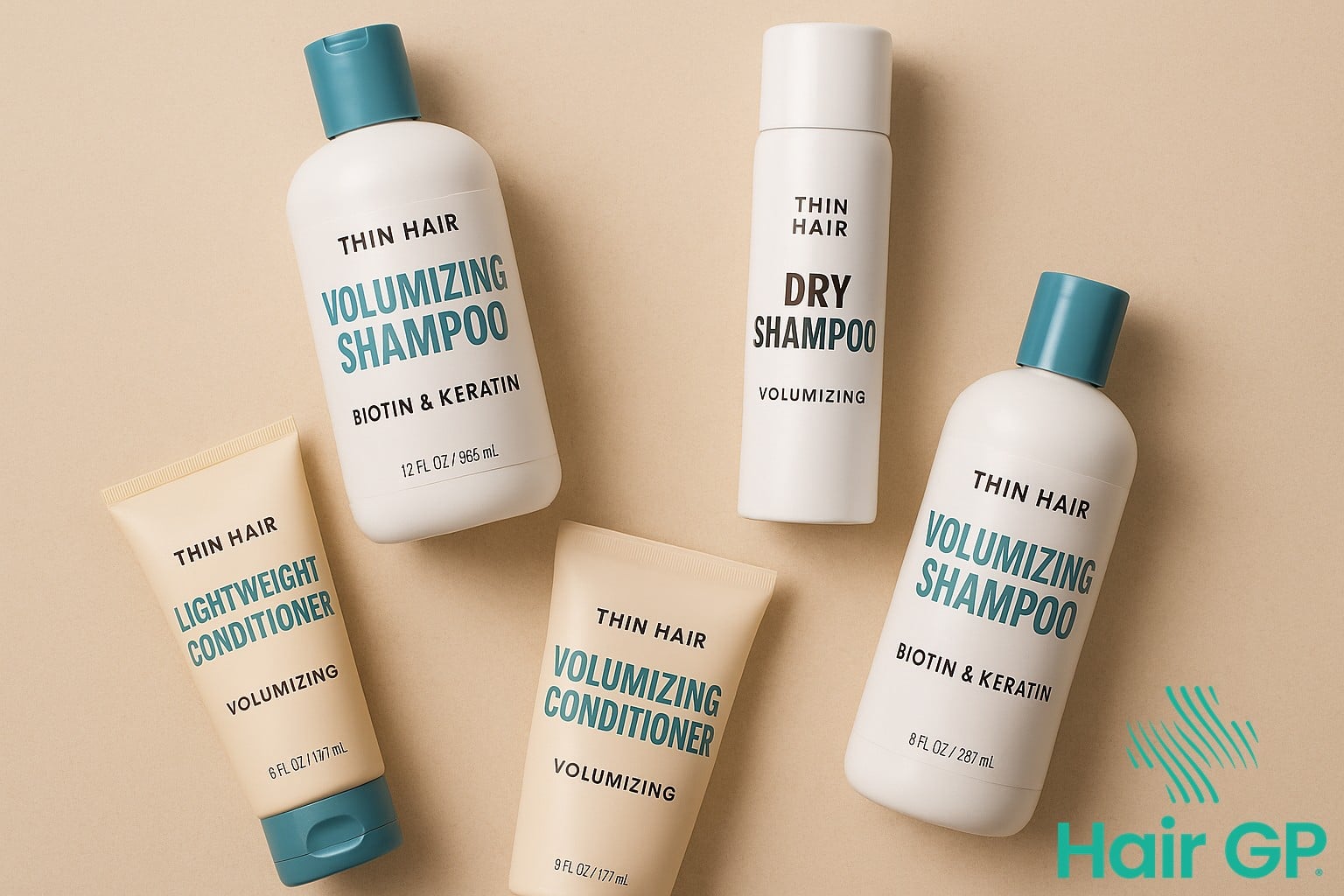
Common Mistakes That Damage Thin Hair
Many everyday habits can unknowingly contribute to hair breakage and excessive hair loss in those with thin hair. One of the most damaging practices is wearing tight hairstyles like ponytails, buns, or braids that pull on the hair follicles. This constant tension can lead to traction alopecia, a form of hair loss caused by prolonged pulling on the hair roots [3].
Over-washing hair daily strips natural oils and weakens already fragile strands, whilst excessive heat styling creates damaged hair prone to breakage. Aggressive towel-drying and brushing wet hair when it’s most vulnerable causes unnecessary stress on thin strands. Using heavy products or applying them near the roots weighs down fine hair and can clog follicles.
To protect thin hair, opt for loose hairstyles and silk scrunchies, limit washing to 2-3 times weekly, and always use heat protectant sprays. Pat hair gently with a microfibre towel and use a wide-tooth comb on damp hair. Choose lightweight, volumising products applied mid-shaft to ends, avoiding the scalp area entirely.
Conclusion
Determining how often to wash thin hair ultimately depends on your individual scalp condition, lifestyle, and hair health goals. Whilst washing hair everyday might seem necessary for those with oily scalps, most individuals with fine hair benefit from washing every 2-3 days to maintain healthy hair without stripping essential oils. The key lies in developing a personalised hair care routine that addresses your specific needs whilst preventing issues like dandruff and excess oiliness.
Remember that achieving optimal hair health requires patience and experimentation. Start by establishing a baseline washing frequency, then adjust based on how your hair responds. Pay attention to signs like increased oiliness, scalp irritation, or product buildup, which indicate when to modify your routine. Consider factors such as seasonal changes, exercise habits, and styling product use when determining your ideal washing schedule.
Most importantly, listen to your hair’s unique needs rather than following rigid rules. What works brilliantly for one person may not suit another, even with similar hair types. By combining the right washing frequency with appropriate products and techniques, you can maintain beautiful, healthy thin hair that looks and feels its best every day.
Frequently Asked Questions
While gentle shampoos are less harsh, daily washing can still strip natural oils from thin hair, leading to dryness and potential damage. Even with mild formulas, washing every 2-3 days is generally better for maintaining healthy thin hair.
Use dry shampoo at the roots to absorb excess oil, try overnight braids to maintain style, and use a silk pillowcase to reduce friction. You can also rinse with just water on non-wash days if needed.
Less frequent washing can support healthier hair growth by maintaining natural scalp oils and reducing mechanical damage from washing and styling. However, a clean scalp is also important for growth, so finding the right balance is key.
Thin hair typically needs more frequent washing (every 2-3 days) due to faster oil distribution, while coily hair can often go 7-10 days between washes due to its texture preventing oil from traveling down the hair shaft.
Use lukewarm water for washing and cool water for the final rinse. Hot water can strip oils and cause damage, while a cool rinse helps seal the cuticle and add shine without weighing down thin hair.
References
- Sinclair RD. Healthy hair: what is it? J Investig Dermatol Symp Proc. 2007;12(2):2-5. PMID: 18004288
- Pochi PE, Strauss JS, Downing DT. Age-related changes in sebaceous gland activity. J Invest Dermatol. 1979;73(1):108-111. PMID: 448169
- Billero V, Miteva M. Traction alopecia: the root of the problem. Clin Cosmet Investig Dermatol. 2018;11:149-159. PMID: 29670386

